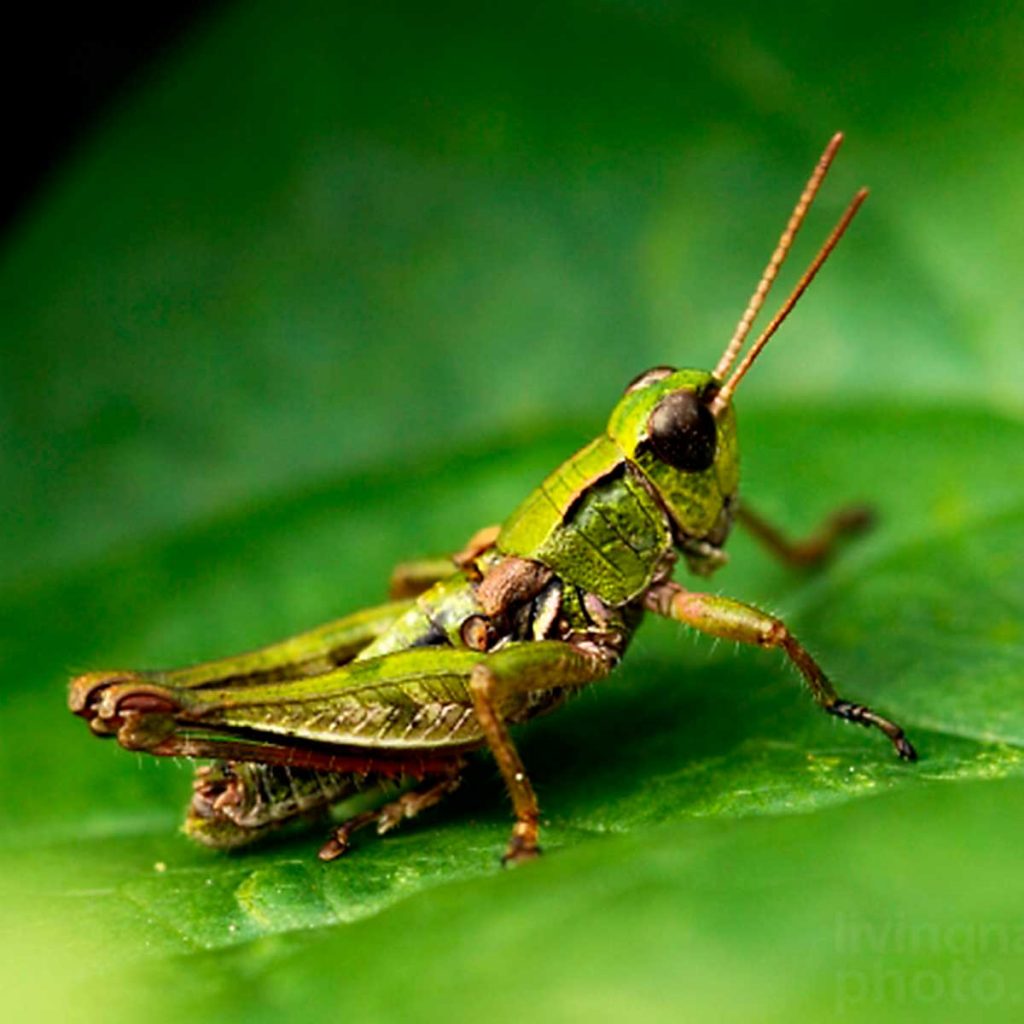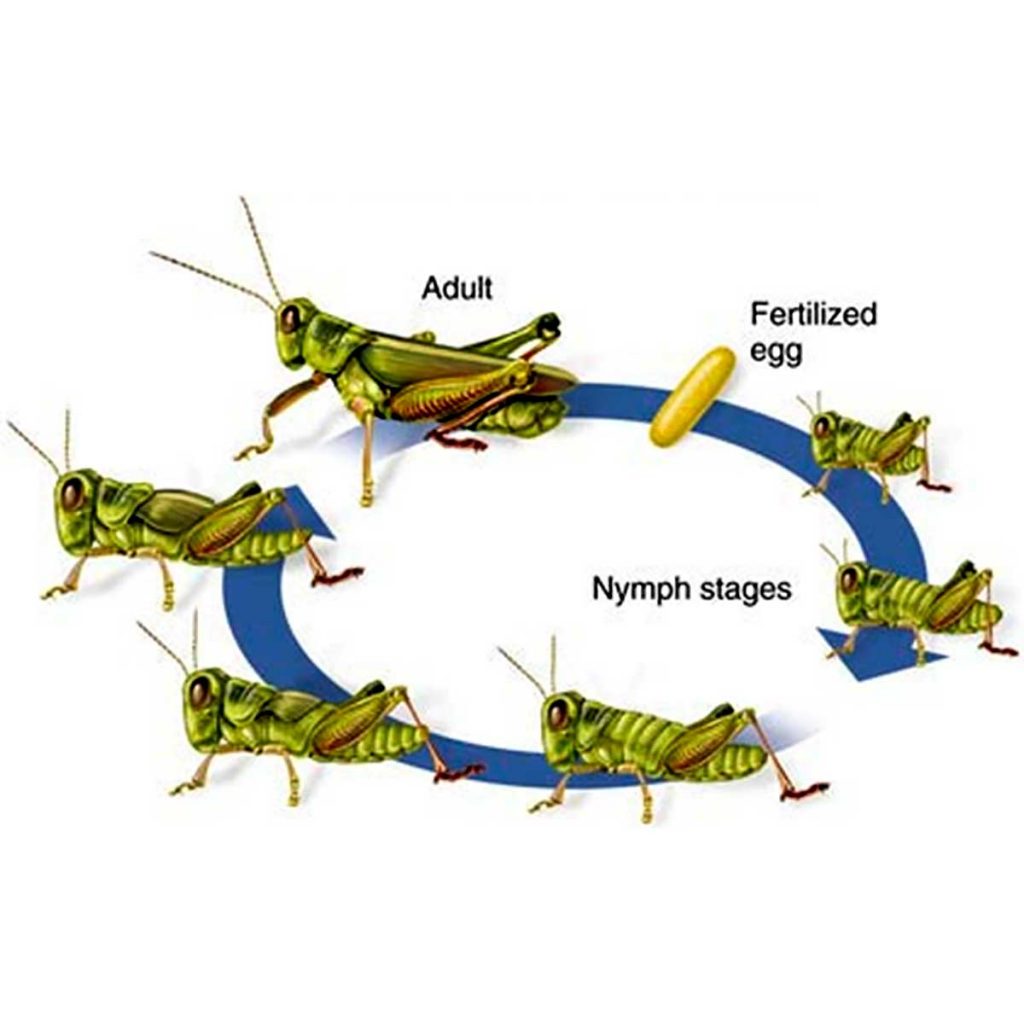
Insects / Cricket
Information for Juniors
Cricket
- Found throughout NZ and the world but only in warm countries
- They live in colonies
- They are noisy and make sound by rubbing their back legs
- Crickets are defenceless and hide mostly in the ground or in trees
- They come out when the sun sets i.e. nocturnal
Appearance
- Crickets are small insects with flattened bodies
- The head is like a sphere with long tender antennae (feelers)
- 2 large compound eyes
- On the forehead are 3 simple eyes
- The thorax or body is black and smooth
- Between the head and the abdomen are 6 legs, 3 on each side
- The female’s back legs are much larger that the male’s assisting it to jump further
- The hind legs of both male and female have spurs which make them look menacing
- The front legs can detect sounds!
- The wings lie flat on the body and are strong and provide protection
- There are bull crickets which live in the ground and free crickets
Life cycle
- Male crickets are most dominant, and the mating dance begins with flicking their antennae aggressively
- Males emit a call and sing loudly
- Females are attracted by the call
- The pair will touch antennae which leads to courtship
- The male fertilises the eggs
Feeding
- Crickets are omnivorous i.e. organic food like fruits, flowers, leaves, grasses, seedlings, shoos of young plants and sometime small aphids, insects, larvae etc.
- Crickets can bite and it can hurt
Singing
- Male crickets make a loud chirping sounds by scraping their body parts together
- Cricket songs repeat and are designed to attract females while scaring away other males
- The courting song is used when the female is nearby
- The mating encourages the female to lay eggs
- The warmer the night temperature the louder the noise
Enemies
- Predators and other threats include wasps, beetles, fungal parasites, birds and spiders.


Information for Junior\ Secondary
Cricket
- Found throughout NZ and the world but only in warm countries
- They live in colonies
- They are noisy and make sound by rubbing their back legs
- Crickets are defenceless and hide mostly in the ground or in trees
- They come out when the sun sets i.e. nocturnal
Appearance
- Crickets are small insects with flattened bodies
- The head is like a sphere with long tender antennae (feelers)
- 2 large compound eyes
- On the forehead are 3 simple eyes
- The thorax or body is black and smooth
- Between the head and the abdomen are 6 legs, 3 on each side
- The female’s back legs are much larger that the male’s assisting it to jump further
- The hind legs of both male and female have spurs which make them look menacing
- The front legs can detect sounds!
- The wings lie flat on the body and are strong and provide protection
- There are bull crickets which live in the ground and free crickets
Life cycle
- Male crickets are most dominant, and the mating dance begins with flicking their antennae aggressively
- Males emit a call and sing loudly
- Females are attracted by the call
- The pair will touch antennae which leads to courtship
- The male fertilises the eggs
Feeding
- Crickets are omnivorous i.e. organic food like fruits, flowers, leaves, grasses, seedlings, shoos of young plants and sometime small aphids, insects, larvae etc.
- Crickets can bite and it can hurt
Singing
- Male crickets make a loud chirping sounds by scraping their body parts together
- Cricket songs repeat and are designed to attract females while scaring away other males
- The courting song is used when the female is nearby
- The mating encourages the female to lay eggs
- The warmer the night temperature the louder the noise
Enemies
- Predators and other threats include wasps, beetles, fungal parasites, birds and spiders.


Information for Senior Secondary
Cricket
- Found throughout NZ and the world but only in warm countries
- They live in colonies
- They are noisy and make sound by rubbing their back legs
- Crickets are defenceless and hide mostly in the ground or in trees
- They come out when the sun sets i.e. nocturnal
Appearance
- Crickets are small insects with flattened bodies
- The head is like a sphere with long tender antennae (feelers)
- 2 large compound eyes
- On the forehead are 3 simple eyes
- The thorax or body is black and smooth
- Between the head and the abdomen are 6 legs, 3 on each side
- The female’s back legs are much larger that the male’s assisting it to jump further
- The hind legs of both male and female have spurs which make them look menacing
- The front legs can detect sounds!
- The wings lie flat on the body and are strong and provide protection
- There are bull crickets which live in the ground and free crickets
Life cycle
- Male crickets are most dominant, and the mating dance begins with flicking their antennae aggressively
- Males emit a call and sing loudly
- Females are attracted by the call
- The pair will touch antennae which leads to courtship
- The male fertilises the eggs
Feeding
- Crickets are omnivorous i.e. organic food like fruits, flowers, leaves, grasses, seedlings, shoos of young plants and sometime small aphids, insects, larvae etc.
- Crickets can bite and it can hurt
Singing
- Male crickets make a loud chirping sounds by scraping their body parts together
- Cricket songs repeat and are designed to attract females while scaring away other males
- The courting song is used when the female is nearby
- The mating encourages the female to lay eggs
- The warmer the night temperature the louder the noise
Enemies
- Predators and other threats include wasps, beetles, fungal parasites, birds and spiders.


